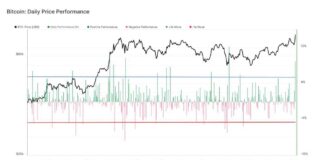Silvergate Bank has successfully resolved a Federal Reserve enforcement action after undergoing liquidation to protect its depositors. The action, which began in May 2023, required the bank to wind down its operations in a way that ensured the safety of its customers’ deposits.
The Federal Reserve Board recently announced the termination of the enforcement action against Silvergate Bank and its holding company, Silvergate Capital Corporation. This decision came after Silvergate completed its liquidation and wind-down plan, returning all deposits to customers and ceasing its operations as a bank. This marks a significant milestone for the bank, which faced challenges following its collapse in March 2023.
Silvergate Bank, previously known for its connections to the crypto industry, experienced a downfall after the FTX incident in late 2022. The bank’s financial troubles, including its stock becoming heavily shorted on Wall Street, led to its collapse in March 2023. The delay in releasing its critical annual filing further worsened its situation, resulting in a sharp decline in its stock value.
In response to the collapse, the Federal Reserve Board oversaw Silvergate’s liquidation plan to ensure customers received reimbursements. Despite this oversight, the bank encountered legal challenges from dissatisfied parties disputing the liquidation process. In August 2023, key executives, including the CEO, resigned amid the ongoing liquidation and legal issues.
While the enforcement action has been lifted, Silvergate still faces legal battles. A class-action lawsuit alleging Silvergate’s involvement in FTX’s fraud was allowed to proceed in March. Additionally, the SEC filed a lawsuit against Silvergate Capital Corporation in May, accusing it of being complicit in the FTX fraud, resulting in a $50 million settlement in June.
Despite these legal challenges, Silvergate Bank has successfully navigated the enforcement action and is moving forward with its operations. The termination of the action signifies a step towards stability for the bank, allowing it to focus on rebuilding trust and ensuring the safety of its customers’ deposits.














